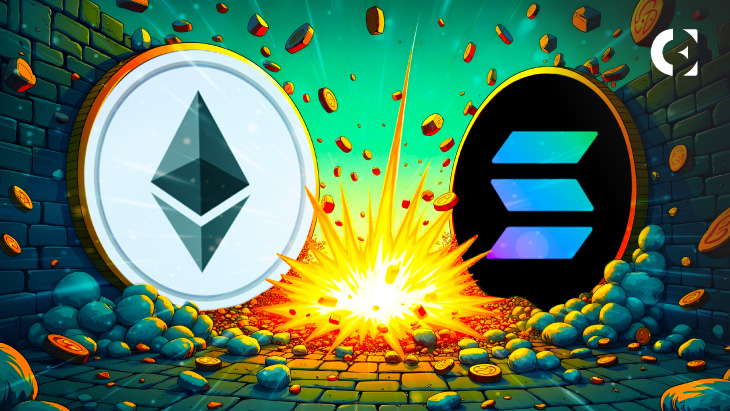Layer-1 Blockchain Wars Intensify: Key Players Battle for Dominance

Ethereum vs. Solana: The Ongoing Debate Over Blockchain Superiority
Ethereum’s Argument for Dominance
In the ever-evolving cryptocurrency landscape, Ethereum and Solana have emerged as two of the most discussed blockchains, each boasting unique strengths. Recently, a spirited debate erupted on social media, drawing attention to the contrasting philosophies of these blockchain giants. Ethereum developer Rip.eth and Solana co-founder Anatoly Yakovenko engaged in a public exchange, each advocating for their platform’s superiority.
Rip.eth kicked off the discussion by asserting that Ethereum stands out as the premier Layer-1 blockchain. He highlighted Ethereum’s unparalleled decentralization, security, and reliability, labeling other Layer-1 options as “compromises.” According to him, Ethereum’s extensive Layer-2 ecosystem enhances its capabilities, offering customizable solutions that are both cost-effective and efficient in terms of speed and privacy. He emphasized that Ethereum is the go-to choice for enterprises and institutions, stating, “Tokenize on the L1, or launch your own L2. Ethereum is obvious.”
Solana’s Counterpoint
In response, Yakovenko quickly countered Rip.eth’s claims, asserting that Solana is the superior option. He emphasized Solana’s decentralization, security, and neutrality, arguing that it achieves low transaction fees without the need for Layer-2 solutions. Yakovenko claimed that Solana is the most active smart contract platform, handling the majority of decentralized finance (DeFi) and stablecoin transactions. He concluded his argument by stating, “Solana is obvious,” positioning it as the default choice for revenue-generating decentralized applications (dApps).
Community Reactions and Insights
As the debate unfolded, various community members weighed in, sharing their perspectives on both sides. One user pointed out the challenges of creating truly decentralized systems like Ethereum, cautioning that while some blockchains may boast high transaction throughput, their resilience remains largely untested. This sentiment was echoed by Rip.eth, who acknowledged the difficulty of achieving such goals.
Analyst Ali Martinez expressed support for Yakovenko’s stance, although some critics questioned Solana’s claims of decentralization, citing concerns regarding validator concentration and network outages. This ongoing dialogue not only highlights the architectural differences between Ethereum and Solana but also reflects the broader views within the cryptocurrency ecosystem.
As both blockchains continue to develop, this debate underscores the importance of real-world applications and developer engagement in shaping the future of Web3. The contrasting philosophies of Ethereum and Solana reveal the strengths and weaknesses of each platform, suggesting that the ultimate success of these technologies will depend on their practical use cases and community adoption.
Disclaimer: The information provided in this article is intended for educational purposes only and should not be considered financial advice. Readers are encouraged to conduct their own research and exercise caution before making any investment decisions.







